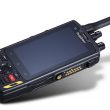New airwaves require new thinking
The introduction of 700 MHz broadband technologies that would leverage public safety’s allocation in the band has created a much-needed dialogue concerning how the band should be structured to meet future voice and data needs, and how new spectrum-sharing and -sensing technologies can promote more efficient use of the airwaves.
The introduction of these new technologies also can further interactions between responder entities that previously operated independent of each other, and introduce new disaster-response capabilities in addition to those already provided by police, fire and emergency medical. Overall service to the public will be improved when public-safety and non-public-safety entities work together to meet communications needs during critical incidents. Using today’s broadband technologies, expanding the scope of responders when appropriate and embracing the idea of new relationships together will enable public safety to be more effective than ever in its mission-critical response.
Critical infrastructure (CI) entities such as water, gas and electric utilities often are involved in disaster-response planning at the local level, but the day-to-day capabilities and requirements of such entities are not always considered on the same level as public safety, nor are representatives of those entities often consulted in the development of national public-safety regulatory policy.
But such entities today operate robust voice and data systems independent from public safety and — as evidenced by their response to Hurricane Katrina — play a critical role in the overall disaster-recovery process. Consequently, they should be included as components of any national public-safety broadband architecture. Furthermore, if the overall objective of appointing a national licensee to facilitate broadband public-safety communications is to improve response to such events, the service provided by these entities should be acknowledged as offering tremendous benefit to the local community, and they should be deemed contributors in developing any national broadband strategy.
However, including CI entities in an effort to improve response will not always be a clear-cut decision. For example, some electric cooperatives have created separate entities to provide Internet service to communities for profit. Due to its favorable propagation characteristics, many may look to provide wireless Internet capabilities in the 700 MHz band as well, particularly in rural areas. Given this, some demarcation may be required within a CI entity to separate its mission-critical-responder capabilities from its non-responder functions with regard to coordinated public-safety spectrum access. More dialogue is required by all involved to ensure critical response capabilities are not compromised by non-critical functions.
Another topic under discussion concerns the creation of a national licensee in the 700 MHz band that would oversee deployments implemented on a community- or regionwide level, which would improve public-safety data interoperability. This is in contrast to today’s implementation approach, where local system buildout can be single-agency based and independent of overall community needs, while also being subject to vendor influences that often promote system disparity between agencies to enhance or protect market share.
Public safety has never really had to develop its system buildout within a community-based plan. Oversight of a wide-area architecture by a national licensee can be a more efficient and effective method of public-safety broadband implementation for communities, and also can act as the platform for introducing new response capabilities into an overall strategy.
Stephen T. Devine is a public-safety services manager for BearingPoint, a management and technology consultancy based in McLean, Va. He previously served in operational and technical roles in the communications division of the Missouri State Highway Patrol for 22 years. He can be reached at [email protected].












